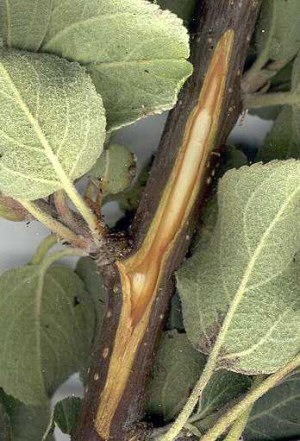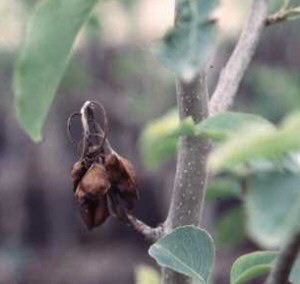Fire Blight Fruit Trees and Certain Ornamentals
 Causal Agent
Causal Agent
The bacterium, Erwinia amylovora
Hosts
Apple, crabapple, pear, raspberry, blackberry, and pyracantha in Oklahoma
Symptoms

Control


